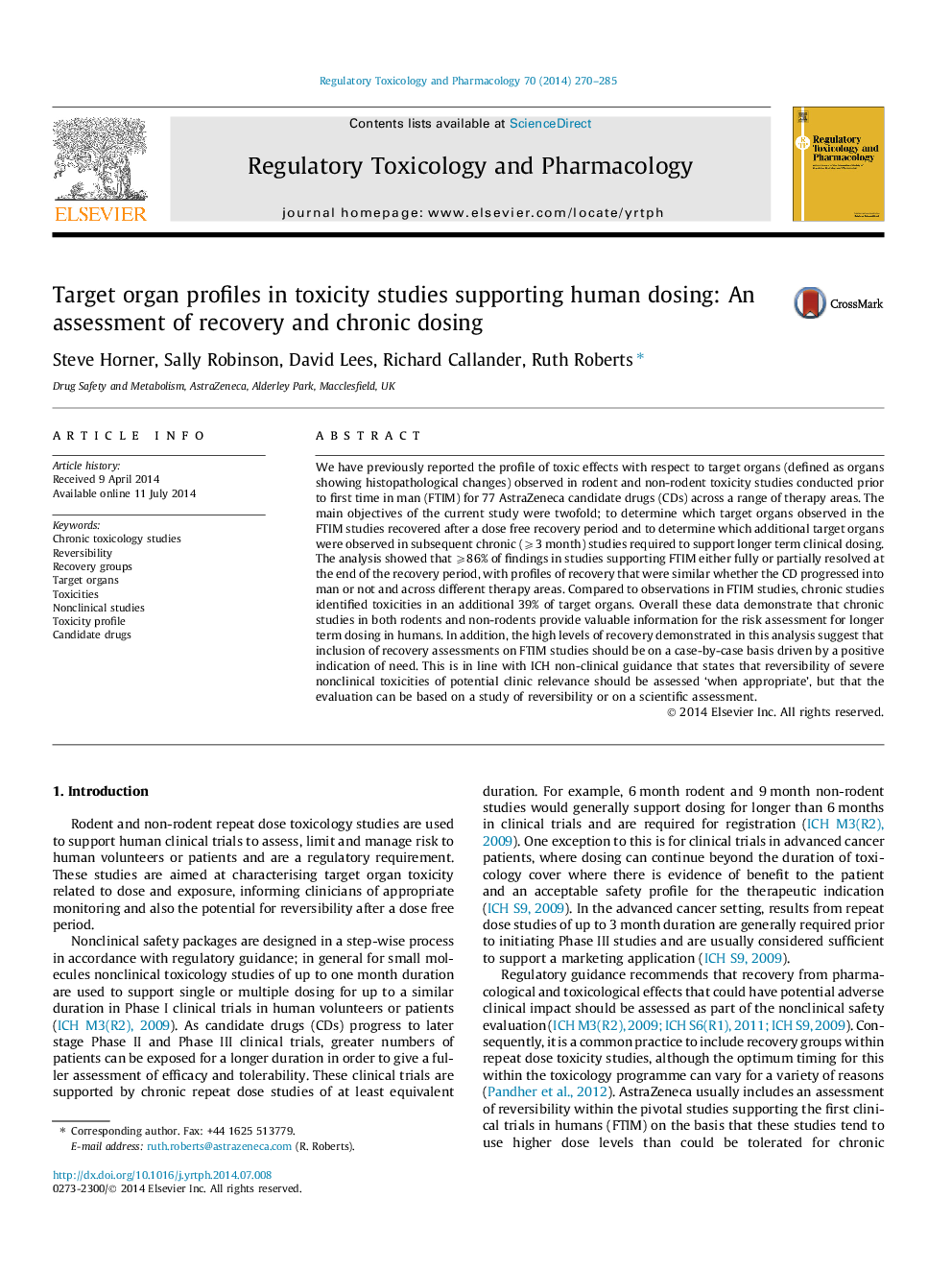| Article ID | Journal | Published Year | Pages | File Type |
|---|---|---|---|---|
| 5856895 | Regulatory Toxicology and Pharmacology | 2014 | 16 Pages |
Abstract
We have previously reported the profile of toxic effects with respect to target organs (defined as organs showing histopathological changes) observed in rodent and non-rodent toxicity studies conducted prior to first time in man (FTIM) for 77 AstraZeneca candidate drugs (CDs) across a range of therapy areas. The main objectives of the current study were twofold; to determine which target organs observed in the FTIM studies recovered after a dose free recovery period and to determine which additional target organs were observed in subsequent chronic (⩾3 month) studies required to support longer term clinical dosing. The analysis showed that ⩾86% of findings in studies supporting FTIM either fully or partially resolved at the end of the recovery period, with profiles of recovery that were similar whether the CD progressed into man or not and across different therapy areas. Compared to observations in FTIM studies, chronic studies identified toxicities in an additional 39% of target organs. Overall these data demonstrate that chronic studies in both rodents and non-rodents provide valuable information for the risk assessment for longer term dosing in humans. In addition, the high levels of recovery demonstrated in this analysis suggest that inclusion of recovery assessments on FTIM studies should be on a case-by-case basis driven by a positive indication of need. This is in line with ICH non-clinical guidance that states that reversibility of severe nonclinical toxicities of potential clinic relevance should be assessed 'when appropriate', but that the evaluation can be based on a study of reversibility or on a scientific assessment.
Related Topics
Life Sciences
Environmental Science
Health, Toxicology and Mutagenesis
Authors
Steve Horner, Sally Robinson, David Lees, Richard Callander, Ruth Roberts,
